Coconut, Coppertone, saltwater, freshly cut grass, and charcoal lumps smoking on the BBQ. These are some of the smells that reminded me of summer when I was growing up. And now as a gardener, tomato leaves make that happy list.
While there’s no shortage of Coppertone and BBQ on a hot summer day, the one smell that truly ushers in summer and closes it out is the heady, earthy, viney, fragrant aroma of fresh tomato leaves as you brush against them—either to trellis the vines in June or to pull up the last lingering plants in October.
Have you ever wondered where, exactly, that distinctive smell comes from?
It’s not in the fruit, no matter how richly perfumed that heirloom tomato variety may be. It’s only in the leaves, stems, and sepals (those little green “hats” on the flowers and fruits), and even on tiny seedlings that have barely seen the sun. It’s an unmistakable scent that no other plant shares, and people either love it or they hate it.
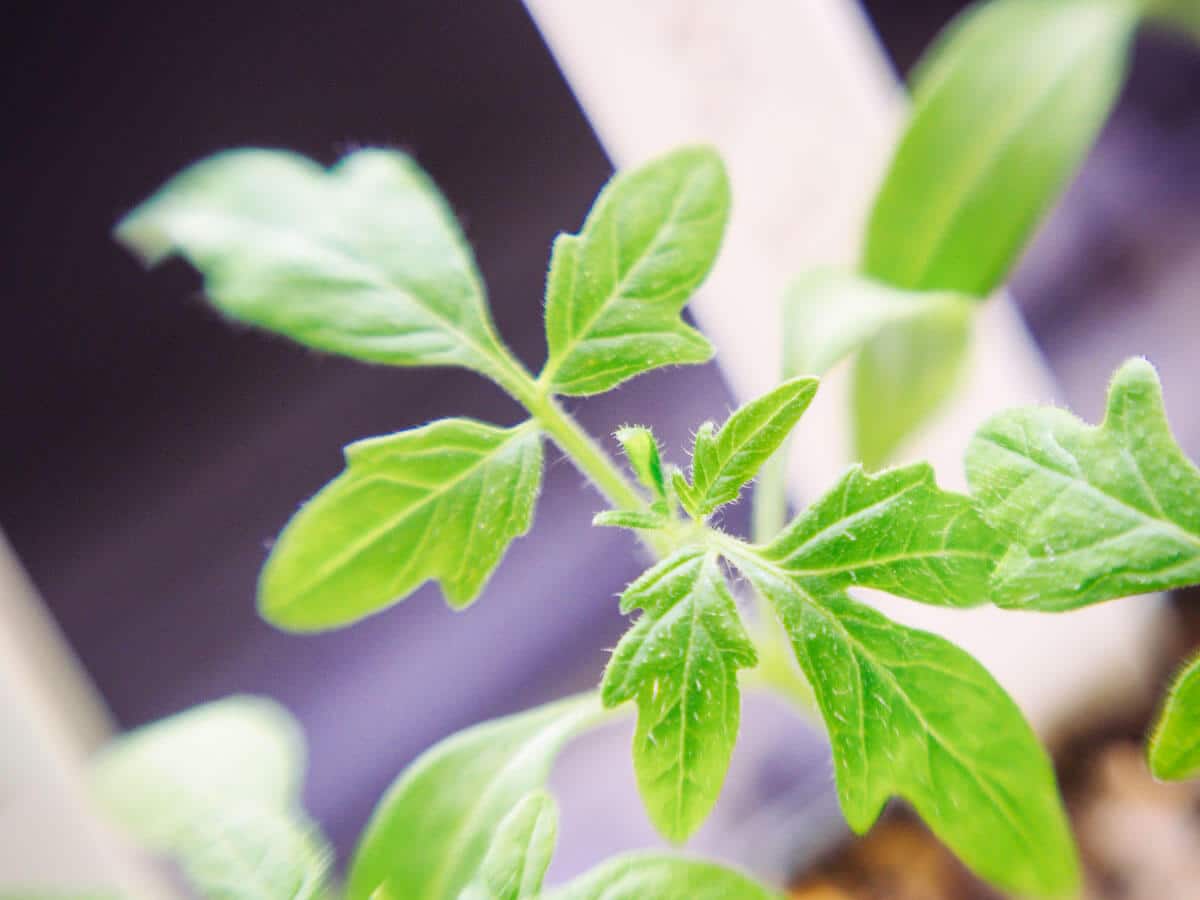
Disclosure: If you shop from my article or make a purchase through one of my links, I may receive commissions on some of the products I recommend.
Though I’m firmly in the “love it” camp, I have to wonder whether the makers of this $15 cologne went too far. (The fragrance is described as the “scent that tomato leaves leave on your hands.”)
But if you’re not the cologne type, there’s always this soy candle (that comes in a plantable box!) marketed as a “picked-fresh-from-the-vine fragrant experience.”
But I digress. How and why do tomato leaves have that unique smell?
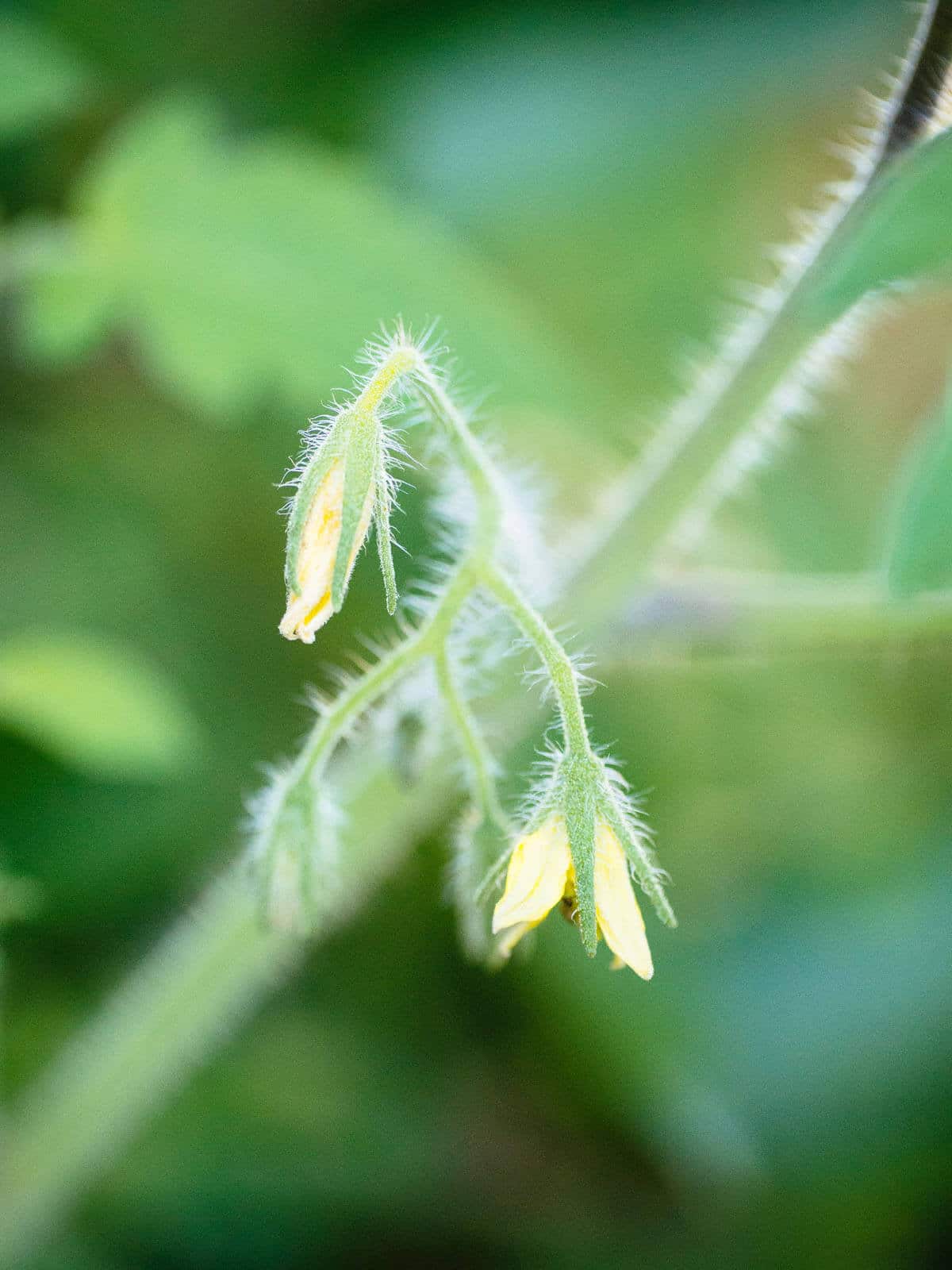
If you examine a tomato plant up close, you may notice that the foliage is covered in short, fine, hair-like structures. These hairs (what I affectionately dub tomato fuzz) are known as trichomes, and they serve a variety of functions and exist on many other plants as well.
On a tomato plant, several types of trichomes are found on the stems, leaves, and sepals.
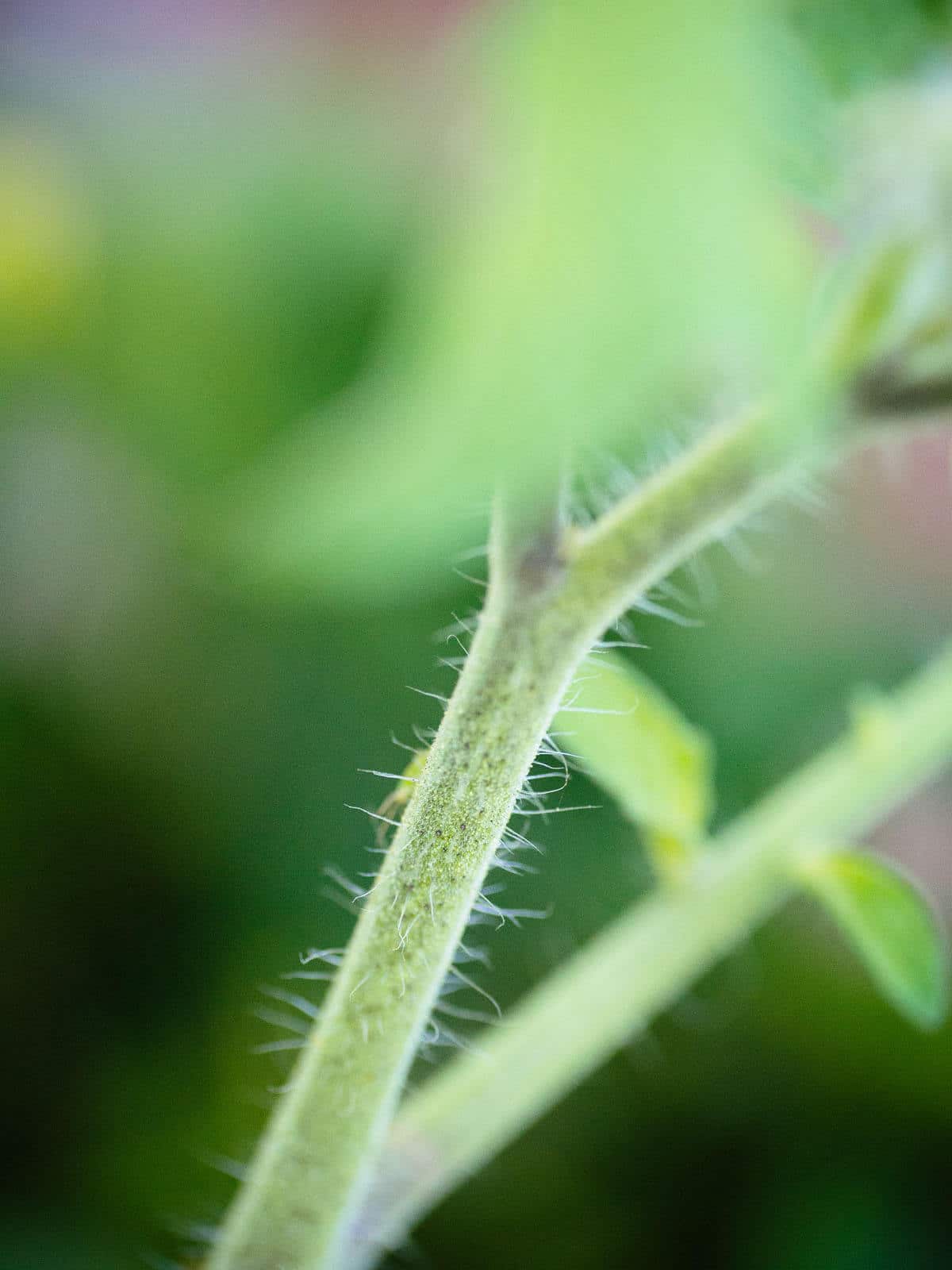
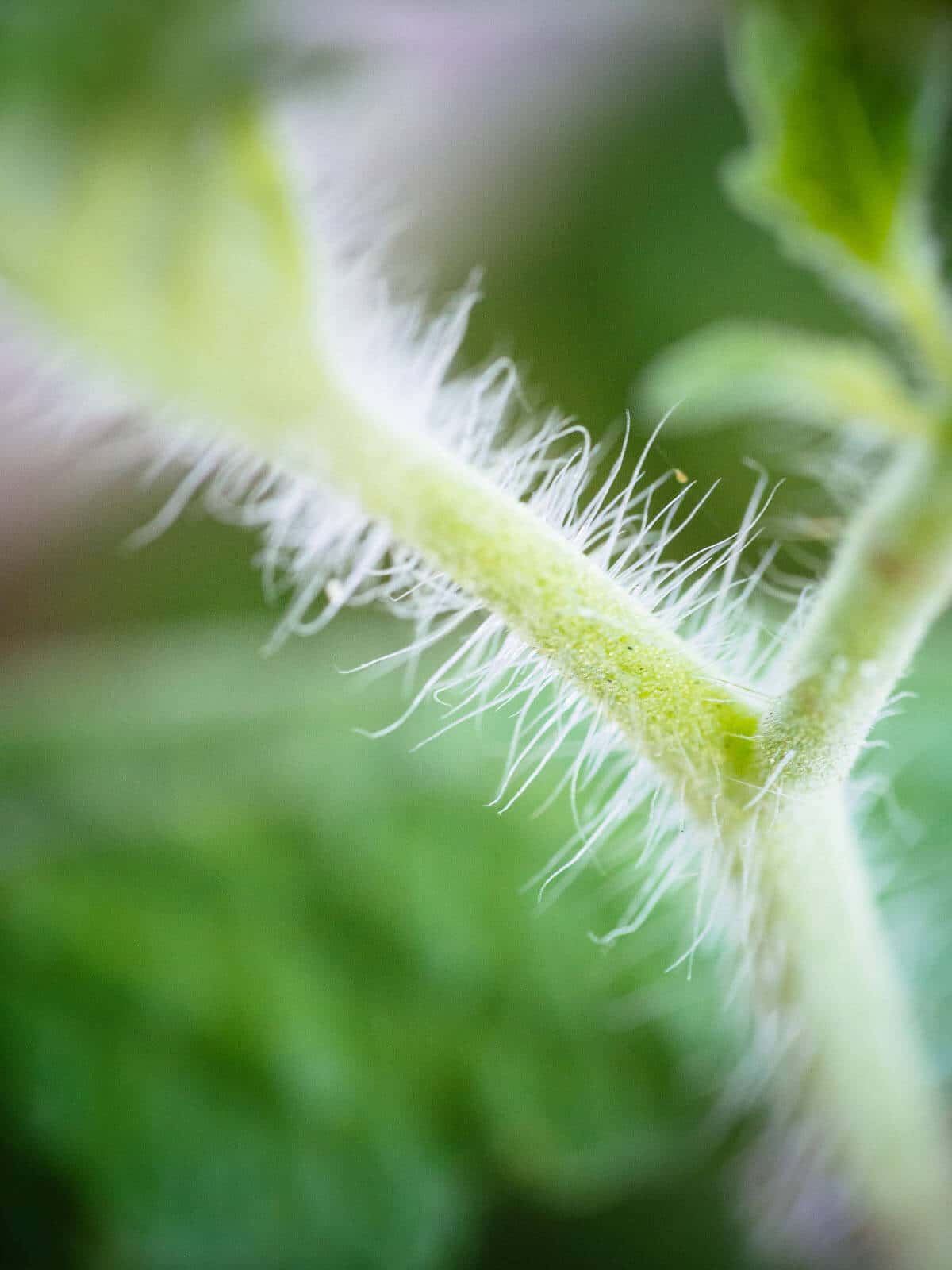
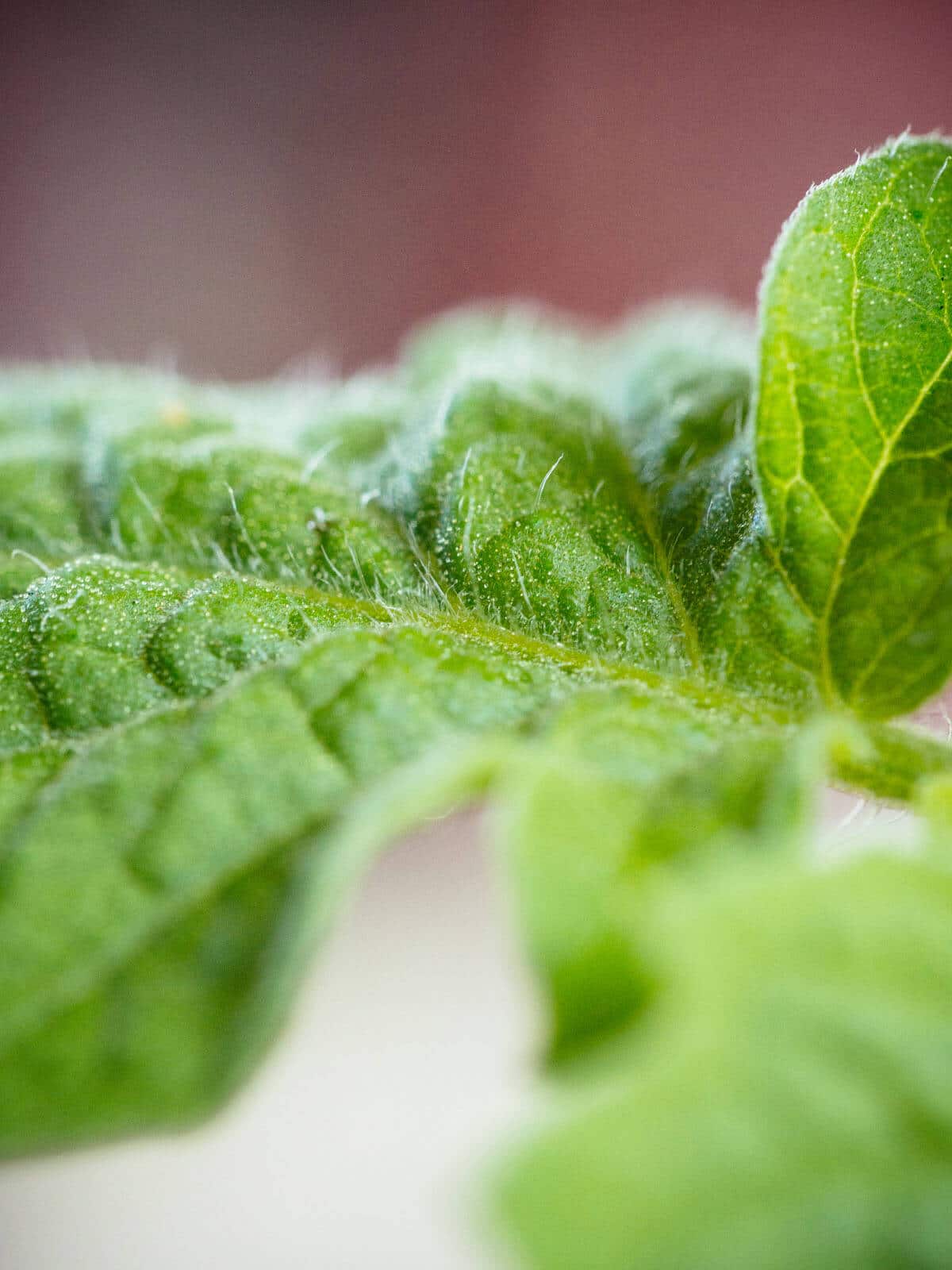
One type works to reduce evaporation of water by trapping moisture on the surface of the leaf. Another helps shield the plant against environmental stresses like extreme temperatures, and yet another type (glandular trichomes) contains crystals and oils in the bulbous section of the structures, seen here on the ends.

It’s believed that these crystals and oils are part of the plant’s defense mechanisms. They produce an unpleasant feel, taste, and smell meant to protect the plant from insects that might feed on its foliage.
It’s a little ironic that what might be considered “unpleasant” by pests can in fact be so intoxicating to the rest of us!
The essential oils are responsible for giving the tomato plant its characteristic smell, as well as the sticky yellow secretion you’ve probably had all over your hands after a day of harvesting tomatoes.
(As an aside, you might remember this post about whether or not tomato leaves are poisonous, where I wrote about a glycoalkaloid called tomatine that’s present in tomato leaves. Tomatine is stored in the glandular trichomes as well.)
Within the oils, the volatile compounds that contribute most to tomato leaf scent are (Z)-3-hexenal, limonene, hexanal, (E)-2-hexenal, eugenol, 1,8-cineole, caryophyllene, beta-phellandrene, humulene, and linalool.
These compounds, collectively, are exclusive to tomato trichomes—which is why no other plant smells like it.
If you want to add a distinctively tomatoey flavor to your tomato sauce or tomato soup, simply steep a few sprigs of tomato leaves in the pot the same way you would steep some bay leaves.
As the trichomes burst and release their oils, the herbal aroma will infuse your dish with a deeper layer of flavor that can only be described as… summer!

Want tomato leaf recipes?
I share my favorites in my book, The No-Waste Vegetable Cookbook, which helps you harvest, cook, and eat not only tomato leaves, but other delicious plants from your garden like squash leaves, pea shoots, and sweet potato vines.
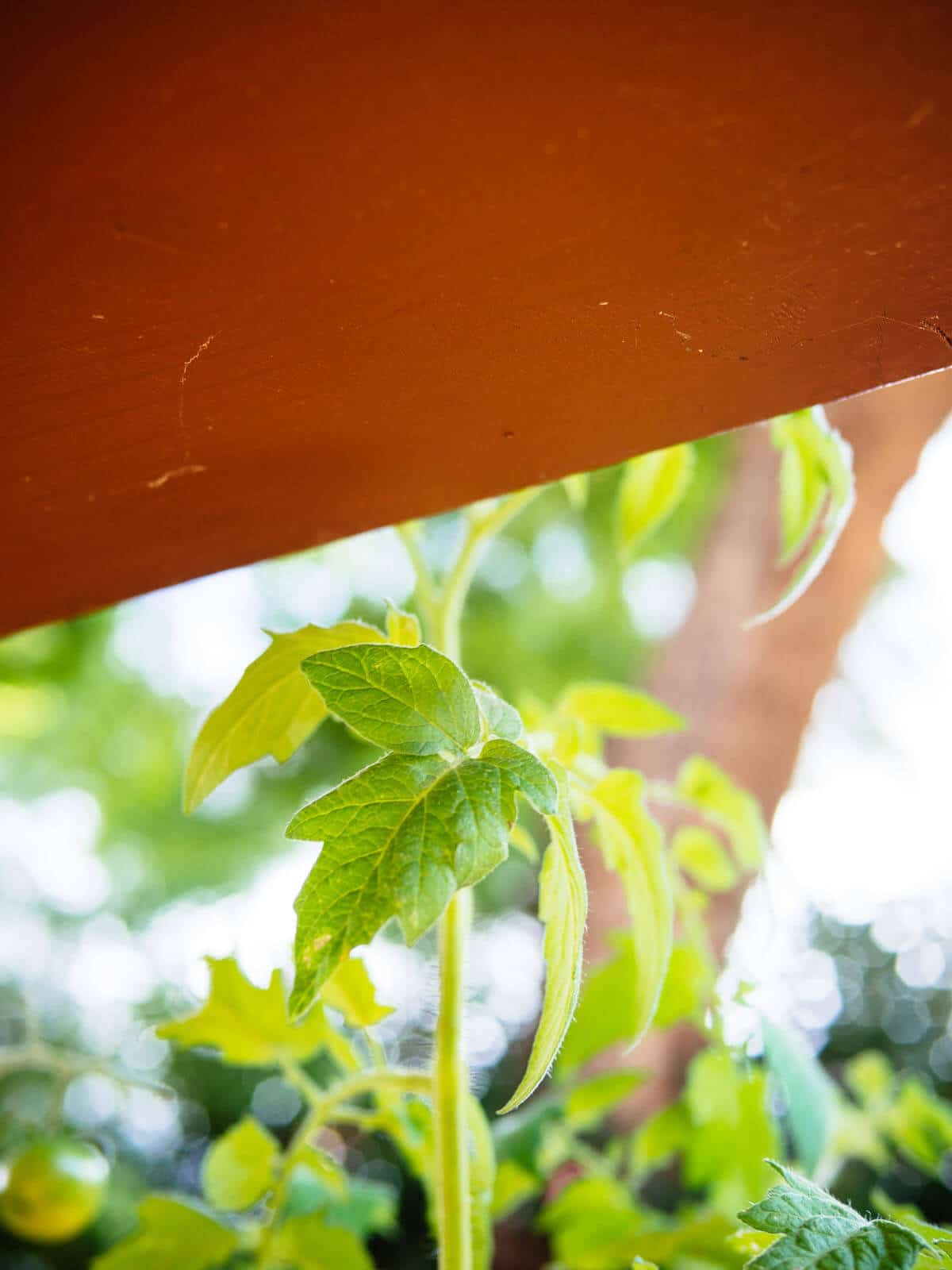
This post updated from an article that originally appeared on September 17, 2015.
View Web Story on the smell of tomato leaves.
















Back when I was in high school in the 1970s, I spent one summer working in the tomato fields here in the San Joaquin Valley. The tomatoes were to be processed into paste/sauce. We were on a picking/sorting machine in the fields all day, every day and by the end of that summer, I could no longer stand the smell of the tomato plants and it was about 15 years before I could eat tomatoes again.
I’ve loved the smell of tomato leaves since I was a kid. I prefer their smell to that of any flower. I always thought it was a shame that you couldn’t eat something that smelled that good, but it appears that you can, at least in moderation.
I have two tomato plants I am not sure what they are. I think they may be Bradley, but whatever they are the leaves look like prehistoric leaves and my oh my the stink. The rest of my tomatoes have normal leaves with that distinctive Earthy smell that is not repulsive to me like those two other plants.
Very informative and scientifically accurate information. Nice to read something you can trust. No hyperbole or sale offer.
The irony you mentioned about anti-herbivory measures taken by plants and us loving them for it is apparent is so much of our produce; just look at alliums and their sulfuric funk that we love.
True, even with bitterness in some of our leafy greens.